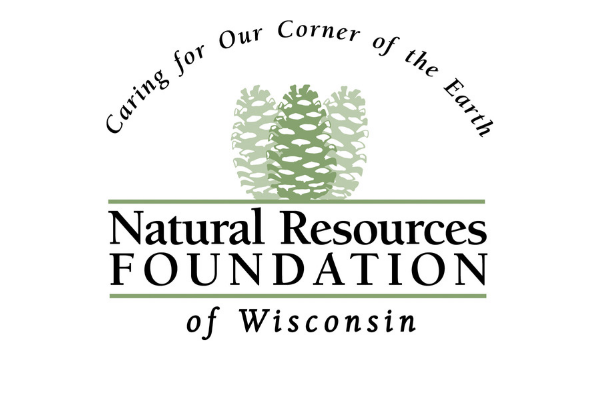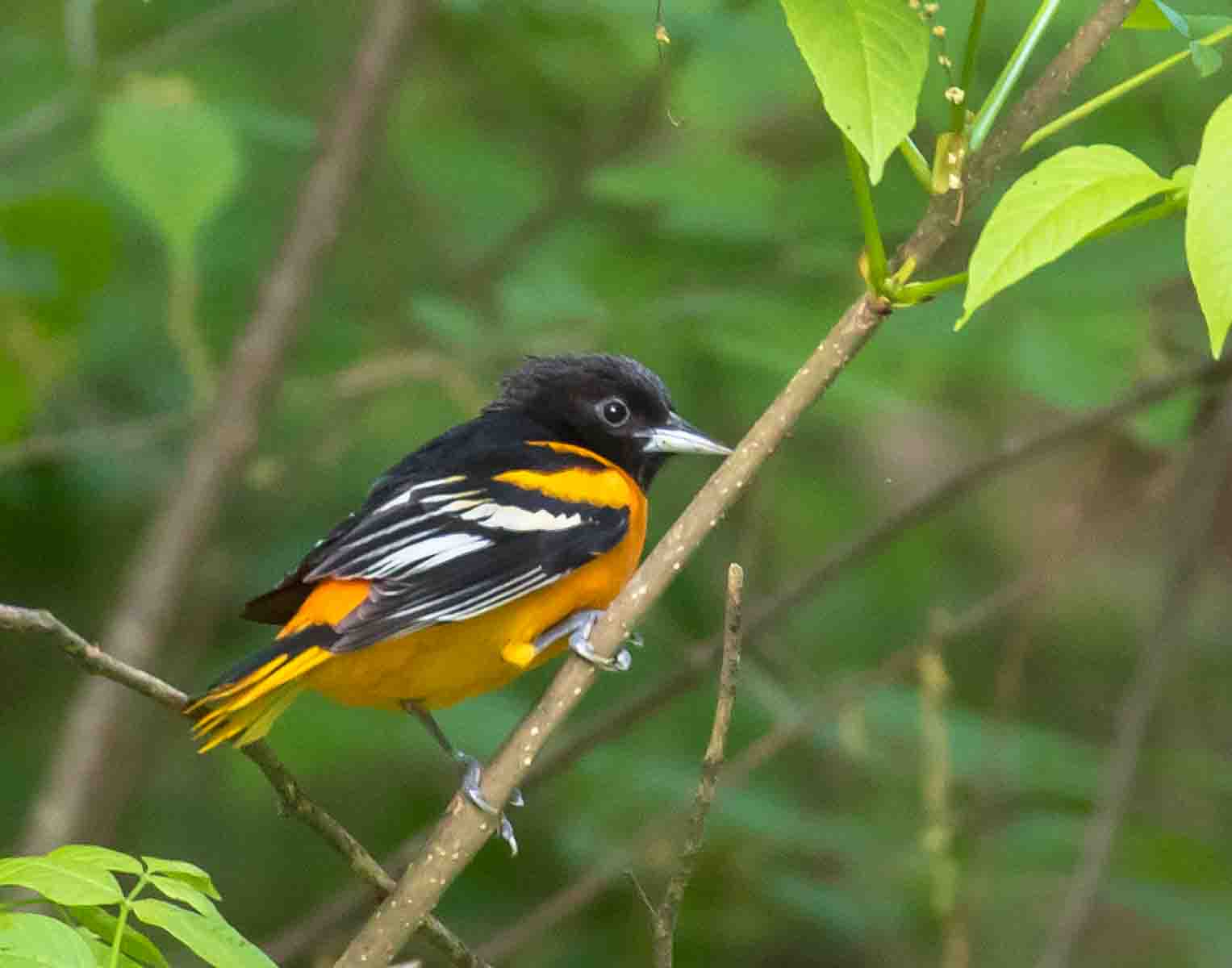Press Release

Caitlin Williamson, Director of Conservation Programs
Natural Resources Foundation of Wisconsin
PHONE: (608) 409-3109
FOR IMMEDIATE RELEASE
Madison, WI
October 21, 2019
Bird Protection Fund announces plans to support Wisconsin birds in 2020
With declining bird populations across the U.S. and Canada, the Bird Protection Fund takes action on Wisconsin bird conservation

Baltimore oriole. Photo by Bruce Bartel.
The flutelike song of a wood thrush at dawn, a glimpse of the striking black and orange Baltimore oriole darting through the treetops, the haunting call of a whip-poor-will on a warm summer night . . .
These iconic Wisconsin scenes are in danger of becoming a thing of the past, according to a report recently published by the journal Science. The study found the number of birds in the United States and Canada has declined by nearly 30% in the last fifty years, a loss of roughly 3 billion birds.
“The same staggering decline in bird populations is being echoed here in Wisconsin,” says Ryan Brady, conservation biologist from the Wisconsin Department of Natural Resources. “We’re especially seeing a loss of grassland birds like meadowlarks and bobolinks, backyard favorites like Baltimore orioles and evening grosbeaks, insect-eating birds like nighthawks and swallows, as well as some shorebirds.”
Along with habitat loss, threats like outdoor cats, collisions with windows, cars, or power lines, pesticides, invasive species, and climate change are all contributing to this unprecedented decline of bird populations.
This is where the Bird Protection Fund steps in – a collaboration between the Natural Resources Foundation of Wisconsin, Wisconsin Bird Conservation Partnership, and the Wisconsin Department of Natural Resources.
Since the fund was created in 2009 it has given out over $1 million towards bird conservation efforts. Projects range from habitat recovery to research.
On the list for 2020 include help for endangered birds like the piping plover and whooping crane, and research that will identify “safe havens” for migratory birds on their on their journeys to Central and South America.
In total, the Bird Protection Fund will grant over $60,000 to fund the following projects in 2020:
- American Bird Conservancy: Establish a permanent endowment that will sustain funding for Kirtland’s warbler populations in Wisconsin. The Kirtland’s warbler was delisted from the Endangered Species Act this year but will require ongoing funding for conservation management from state and local partners, due to the species’ specific habitat needs.
- Bird City Wisconsin: Support for the Bird City Wisconsin program, which engages communities in bird conservation by providing recognition to municipalities that protect and manage green space, educate their citizens, landscape with native plants, reduce threats from collisions and cats, and take other actions to make urban areas friendlier places for birds and people.
- Cornell Laboratory of Ornithology: Support the Neotropical Flyways Project, a joint research project with Cornell Lab of Ornithology and on-the-ground conservation partners in Central and South America, to understand stopover habitat needs for migratory birds.
- International Crane Foundation: Support ICF’s efforts to recover the eastern population of federally endangered whooping cranes, including their captive breeding and rearing, specialized veterinary care, and research and monitoring efforts.
- Western Great Lakes Bird and Bat Observatory: Support the Observatory’s Lake Michigan waterbird and waterfowl research programs that help inform local and regional conservation efforts.
- Wisconsin Bird Conservation Partnership: Provide funding to hire an Important Bird Areas Assessment Specialist, who will develop a process for assessing and prioritizing Wisconsin Important Bird Areas to inform conservation efforts.
- Wisconsin Department of Natural Resources: Support on-the-ground conservation, research and monitoring activities for state endangered species including the Kirtland’s warbler and piping plover.
- Wisconsin Society for Ornithology: Provide financial support for the Wisconsin Breeding Bird Atlas II, as this significant citizen science project phases from data collection to analysis and publication.
Brady is optimistic about the impact of these, and other bird conservation efforts.
“We know that bird conservation works when we’re intentional and invest resources in it. Take the trumpeter swan, for example. Twenty years ago, Wisconsin only had about 75 individuals. We launched a recovery plan in 1986, and now they are off the endangered species list and their population has grown to over 5,000 individuals.”
He urges Wisconsinites to take action at home to help birds, like keeping cats indoors, creating backyard habitat with native plants, avoiding pesticides, removing invasive species, and eliminating collisions of birds with windows by using deterrents that reduce the reflectivity of glass.
“Roughly one in three Wisconsinites consider themselves bird watchers, which is great. We should all do things at a local level to care for the birds we love,” says Brady. “And we can take it a step further by advocating for birds in our communities and donating to causes that are critical to reversing population declines in birds, like the Bird Protection Fund.”
The Bird Protection Fund is mainly funded through the Great Wisconsin Birdathon, one of the largest walk-a-thon style birding fundraisers in the country, coordinated by the Natural Resources Foundation of Wisconsin.
The Natural Resources Foundation of Wisconsin is a nonprofit 501(c)3 created in 1986. In the years since, the Foundation has contributed nearly $7 million to conservation efforts to protect the lands, waters, and wildlife of Wisconsin and to support environmental education in our state. Learn more at www.WisConservation.org.
The Great Wisconsin Birdathon began in 2012 and since then has raised more than $500,000 for bird protection in Wisconsin. The funds are collected and managed by the Natural Resources Foundation of Wisconsin through the Bird Protection Fund. Learn more at the Birdathon website.
###
Embed the Bird Protection Fund slideshow on your website with this code:
<iframe src=”https://docs.google.com/presentation/d/e/2PACX-1vRR5iacGIiPqepcsgZk4Tu-R9hDXFlFp1v2k_12LcOQDpvDoQnBr-dNFAPLbP8c9gxsIH9uHRExugdR/embed?start=true&loop=true&delayms=10000″ frameborder=”0″ width=”960″ height=”569″ allowfullscreen=”true” mozallowfullscreen=”true” webkitallowfullscreen=”true”></iframe>

Caitlin Williamson
Director of Conservation Programs
(608) 409-3109
Caitlin.Williamson@WisConservation.org
Cait oversees the Natural Resources Foundation’s grant programs and initiatives for conservation and environmental education, working closely with partners across the state to ensure that our Foundation has the most significant impact possible on Wisconsin’s lands, waters, and wildlife through strategic, science-based investments.
